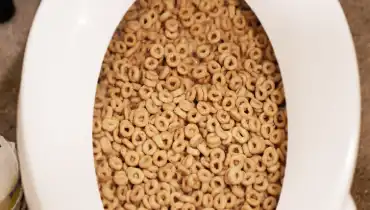Is it Possible to Dispose of Food in the Toilet?
Is it Possible to Dispose of Food in the Toilet?
Blog Article
In this article further down you might get additional helpful data related to Is it safe to flush food (especially rice) down the toilet?.

Intro
Lots of people are often confronted with the dilemma of what to do with food waste, specifically when it involves leftovers or scraps. One usual concern that develops is whether it's okay to purge food down the bathroom. In this article, we'll delve into the reasons that people could think about purging food, the repercussions of doing so, and alternative approaches for appropriate disposal.
Reasons why people might think about purging food
Absence of recognition
Some people may not be aware of the potential injury triggered by purging food down the commode. They might mistakenly believe that it's a safe technique.
Comfort
Purging food down the bathroom may seem like a fast and easy solution to getting rid of unwanted scraps, specifically when there's no nearby garbage can readily available.
Laziness
In some cases, people may simply choose to flush food out of large negligence, without taking into consideration the effects of their activities.
Consequences of flushing food down the toilet
Environmental effect
Food waste that winds up in waterways can contribute to contamination and damage marine ecosystems. In addition, the water made use of to purge food can stress water sources.
Plumbing problems
Flushing food can cause clogged up pipelines and drains pipes, causing costly plumbing repairs and aggravations.
Types of food that need to not be flushed
Fibrous foods
Foods with fibrous structures such as celery or corn husks can obtain tangled in pipes and trigger clogs.
Starchy foods
Starchy foods like pasta and rice can take in water and swell, causing clogs in pipelines.
Oils and fats
Greasy foods like bacon or cooking oils should never be flushed down the commode as they can strengthen and create clogs.
Correct disposal approaches for food waste
Making use of a garbage disposal
For homes equipped with waste disposal unit, food scraps can be ground up and purged via the pipes system. Nevertheless, not all foods appropriate for disposal in this fashion.
Recycling
Specific food packaging materials can be reused, minimizing waste and reducing environmental influence.
Composting
Composting is a green method to get rid of food waste. Organic materials can be composted and made use of to improve soil for horticulture.
The significance of correct waste administration
Lowering environmental injury
Proper waste monitoring practices, such as composting and recycling, assistance minimize contamination and maintain natural resources for future generations.
Securing pipes systems
By avoiding the method of flushing food down the commode, homeowners can prevent costly plumbing repairs and maintain the stability of their plumbing systems.
Final thought
In conclusion, while it may be tempting to flush food down the toilet for convenience, it is essential to understand the potential consequences of this activity. By taking on appropriate waste administration practices and taking care of food waste sensibly, individuals can contribute to much healthier plumbing systems and a cleaner environment for all.
FLUSH FOOD DOWN THE TOILET?
FLUSHING FOOD CAN CAUSE BLOCKED DRAINS IN YOUR HOME
All of the plumbing fixtures in your home are connected to the same sewer pipe outside of your home. This outdoor sewer pipe is responsible for transporting all the wastewater from your home to the Council sewer mains. Even small pieces of food that go down the kitchen sink can cause problems for your sewer. It should therefore be obvious that flushing larger bits of food, such as meat, risks a clog in either the toilet itself or the sewer pipes. Flushing greasy food is even more problematic because oil coagulates when it cools, coating the interior lining of your pipes.
THE TOILET IS NOT A BIN
Food isn’t the only thing that people shouldn’t be flushing down the toilet. People use the toilet to dispose of all kinds of things such as tampons, makeup wipes, dental floss, kitty litter and even underwear. Water goes to great lengths to educate residents about the high costs and stress placed on wastewater treatment systems simply from people flushing the wrong stuff down the toilet. It costs taxpayers millions of dollars each year, and homeowners thousands in blocked drain repairs.
FLUSHING FOOD IS A WASTE OF WATER
Flushing food is a waste of our most precious resource - water. In June this year Level 1 water restrictions were introduced to protect water supply from drought conditions. Much of New South Wales continues to be affected by prolonged drought with recent figures revealing up to 97 per cent of the state remains in drought. Depending on whether you have a single or dual flush toilet, every single flush uses between five and 11 litres of water. In the current climate this is a huge amount of water to be wasting on flushing food that should be placed in the bin (or better yet, the compost).
https://www.jabplumbingsolutions.com.au/blog/can-you-flush-food-down-the-toilet

As a serious reader about Is it safe to flush food (especially rice) down the toilet?, I think sharing that post was smart. If you enjoyed our page if you please be sure to pass it around. I am grateful for your time. Return soon.
Instant Quote Report this page